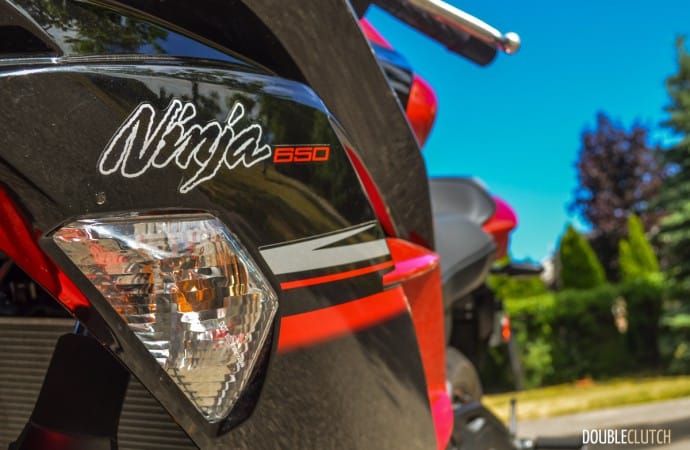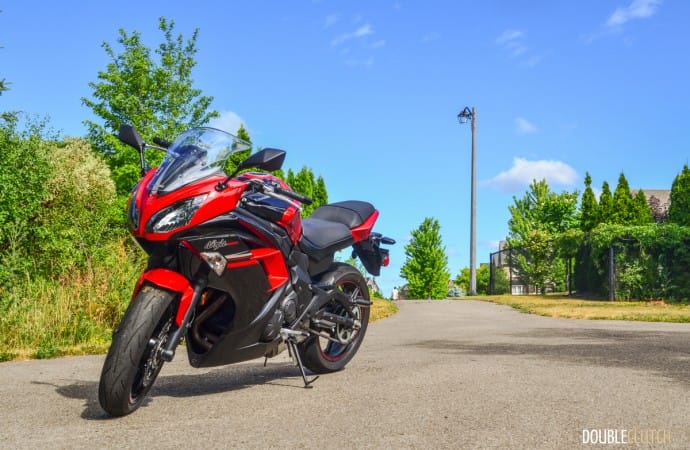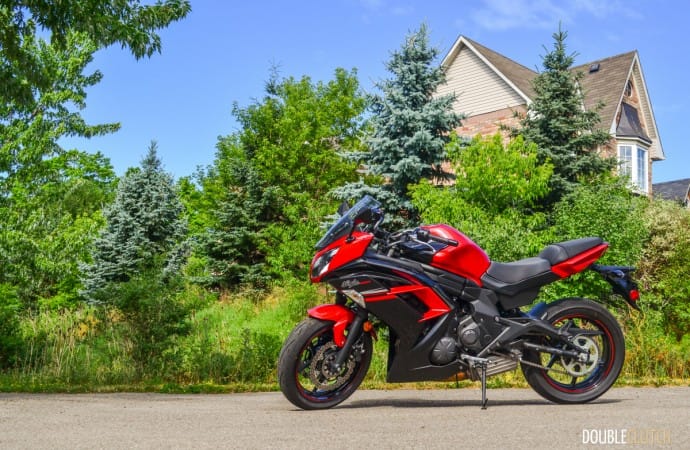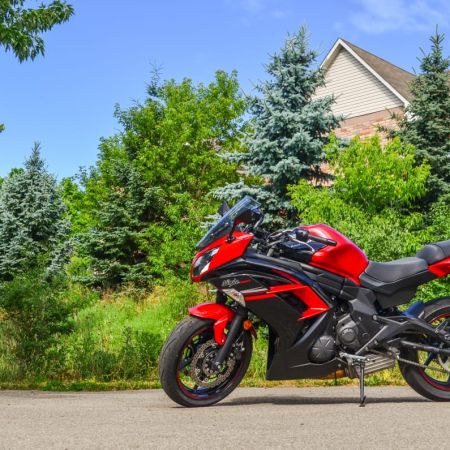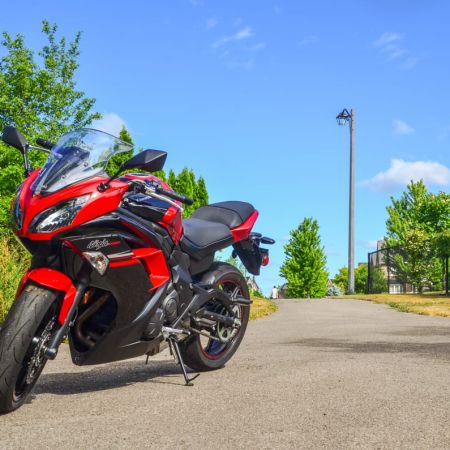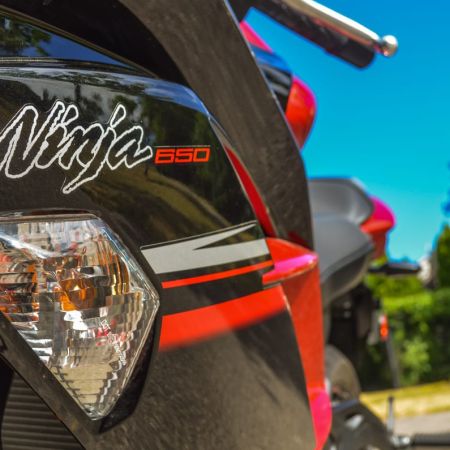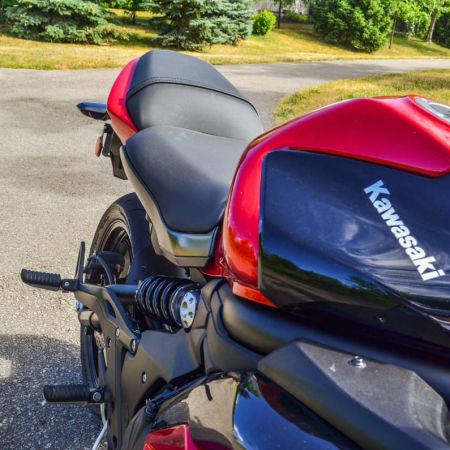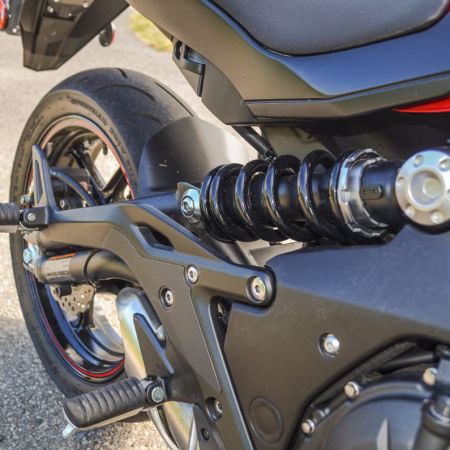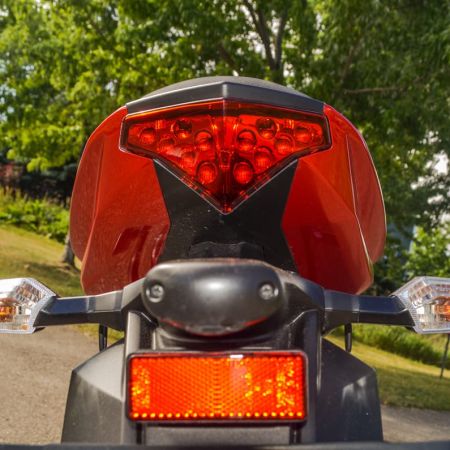The Kawasaki Ninja 650 was made to be the perfect daily commuter motorcycle. It has enough power to escape dangerous situations, without the worry of an accidental one-wheeled getaway. The seating position is upright and comfortable enough to keep you pain-free on longer rides. Gearing is set up so that in sixth, vibration is at a minimum. All of these things point in favour of Kawasaki reaching their goal, yet there were significant drawbacks that made the 2016 Kawasaki Ninja 650 ABS one of the often-forgotten members of the Kawasaki family in the past.
Aesthetically, the Ninja 650 looks rather simple. The colour scheme is bold, the fairings have some neat intakes, but on the whole, it’s nothing new. The lines resemble that of a Ninja 300, and don’t offer much in terms of exoticness. Simply put, the Ninja 650 isn’t going to turn many heads. That being said, the bike wasn’t exactly meant for that. It is an everyday commuting motorcycle, and simplicity is the essence of what Kawasaki tried to capture in their design. One feature I do enjoy on the 650 is the look of the mono-shock suspension in the rear. It stands out quite well in the Candy Lime Green colour scheme. The other available colour sets are Candy Persimmon Red and Metallic Carbon Gray.
Let’s talk about the ergonomics – this is the aspect of the Ninja 650 I had the biggest problem with. The upper body positioning is perfectly fine. The handlebars extend upwards, pushing the rider into a nice upright position. This, combined with a seat height of 31.7 inches, gives the rider a good vantage point with a head above the traffic. The seat itself is quite standard and no cause of complaint. It is the windscreen that was bothersome. The sloping of the windscreen seems to imply a perfect cockpit in a full tuck, yet the Ninja 650 was not meant for such riding. Instead, I, a 6ft-tall rider, experienced a great amount of wind buffeting on the highway.
Another problem arises with the foot pegs. If you’re sitting in the proper seating position with the balls of your feet on the foot pegs, your ankles will be pushed outwards, away from the bike. The plate which the foot pegs are attached to is curved outwards, and the end result is possibly the most awkward foot position I have experienced. Attempting to slide my feet towards the outside of the peg did little to mitigate the situation. The only solace I found was completely changing my foot position and riding with the arch of my feet on the pegs. I am a fan of Kawasaki for their attention to detail, and this seems to be quite a large detail to miss.
The motor underneath the fairings is a 649cc parallel twin. It pulls predictably and steadily. The amount of vibration is rather high in the first couple gears, but simmers down significantly when you hit fourth. Though the gear ratios were well designed, the transmission itself is clunky and unrefined. Shifting up from first into second was rarely uninterrupted by the green flash of neutral. Many times, I made a fool of myself trying to accelerate in neutral after a mis-shift. The kick up needs to be a lot more firm than usual. From another perspective, it could be said that neutral is rather easy to find.
Suspension and handling are both happily predictable and neutral. Riding in the city, imperfections in the road aren’t a huge worry. Suspension is loose enough to make them manageable, and handling is flexible enough to avoid them. Low speed manoeuvres are a breeze because of this. With a wet curb weight of 460.8 lbs, the Ninja 650 holds its own quite well, and the rider is free to feather the clutch and give it some gas.
Stacked directly against its competition, the Kawasaki Ninja 650 does not hold up all that well. Honda’s CBR650F is much more refined, capable, and well-tuned, though there is a significant price difference. As a value proposition, the Ninja 650 ABS (coming in at an MSRP of $7999) begins to make a lot more sense than the CBR, which is $1,700 more. It has its flaws, but many riders will overlook them or simply not notice, because its stability and overall easy-to-ride personality is very easy to get along with.

